
"I Had One of Those When I was a Kid!" A Museum of Soviet-era Toys Opened in Riga
/ Главная / Russkiy Mir Foundation / Publications / "I Had One of Those When I was a Kid!" A Museum of Soviet-era Toys Opened in Riga"I Had One of Those When I was a Kid!" A Museum of Soviet-era Toys Opened in Riga
Yana Voronova from Riga came up with the idea of the Our Childhood Museum exhibiting Soviet-era toys 12 years ago when she was selecting toys for her newborn son. She opened Latvia's first museum of items from the USSR (from furniture to soap) and has collected tens of thousands of toys from the era that lasted for nearly a century.
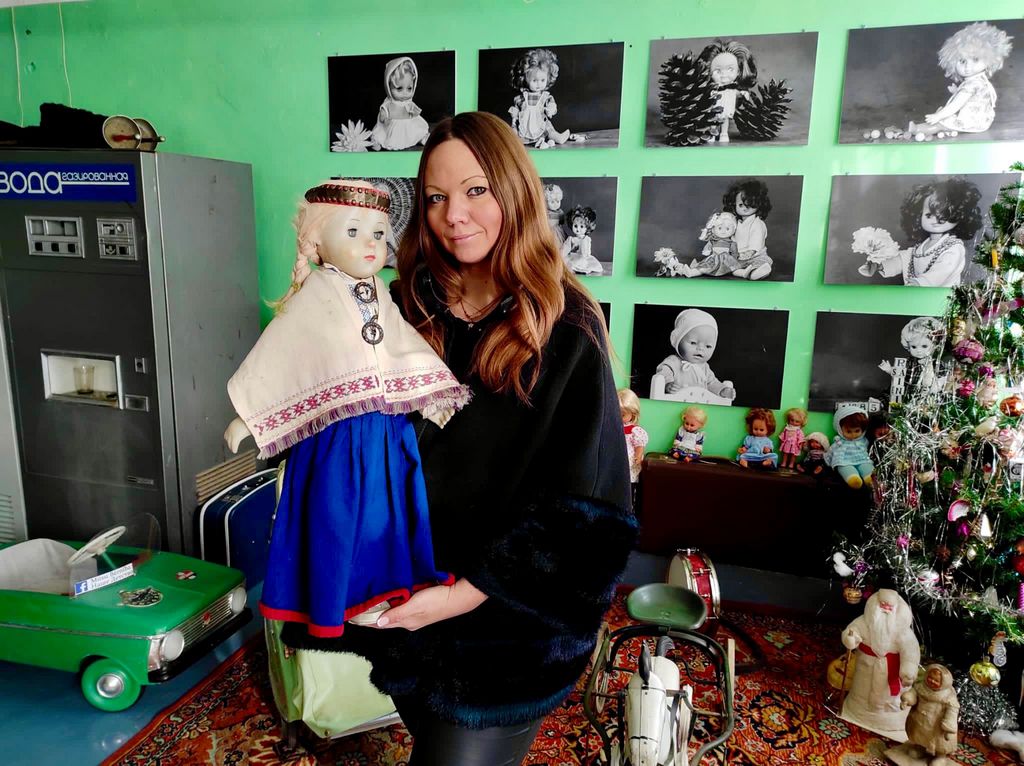
Yana Voronova and her dolls
At the museum, Yana names the Soviet toy factories and artists that designed the teddy bears, dolls, and kewpies played by generations of people. She knows them all by heart. Truth be told, as soon as visitors come into the Yana Voronova's museum, most of them do not listen to the guide and rush to the toys: "Oh, I had one like that when I was a kid!" The scenario is almost the same for everyone, be it Russians, Latvians, or foreigners.
Publications about the Our Childhood Museum in social networks result in dozens of very similar comments: "I have two bags of toys from my childhood at my summer cottage. Where should I bring them?"
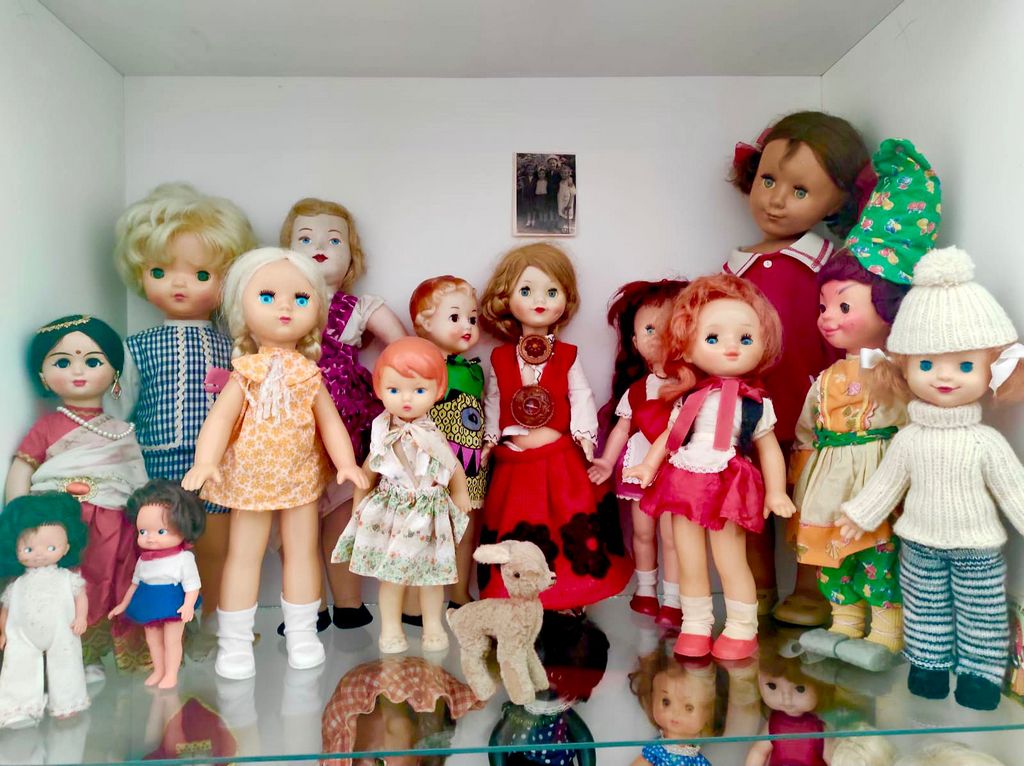
Riding a planetary rover into childhood
"When my eldest son was born, I started searching for interesting toys," Yana recalled in an interview with Russkiy Mir. "It happened that I came across a planetary rover, a toy from my childhood. I wanted to buy it to recall and go back to my early years. I searched, found it, and it actually turned into a guide to my childhood. I was drawn in. I started recalling other toys, inquired about what my husband used to play with, and began to explore the history of toys. And it's been going on for 12 years now.”
Yana shared that her childhood was a happy one. She had loving parents who showered their daughter with toys. The family used to go fishing and mushroom picking together. Having returned, "we would launch the planetary rover in a dark room because there were lights on it, and those were very happy moments". Yana's father passed away. Having become a parent, she bought the planetary rover in working order online.
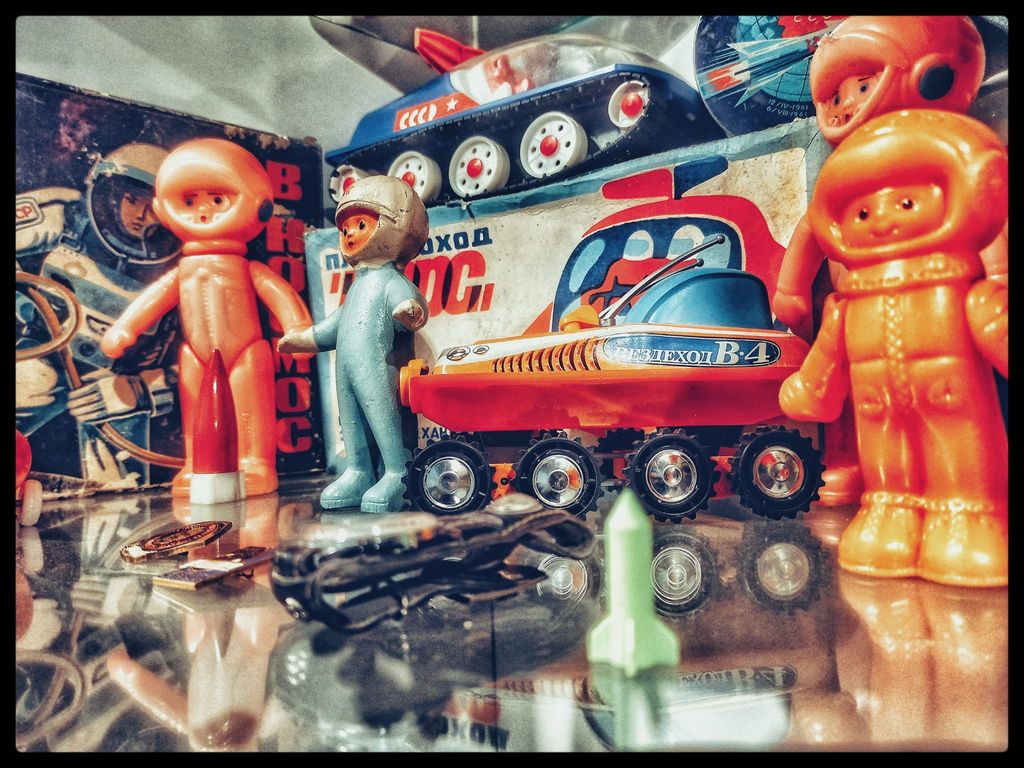
“When I figured out that toys make me go back to my childhood and feel happy, I wished others could feel it, too," she said. "My husband set up a room for me where I put my first exhibits. When friends visited us and opened the room, their faces would light up with joy and delight right away. My museum feels like a time machine.”
The collection was transferred from the residential room to the premises with an area of 54 sq.m. (177.2 sq.ft.). Two months later, it became clear that more space was required as the museum was flooded with visitors. The premises were found in a former garment factory. "Here I have 350 sq. m. (1148.3sq.ft.) to begin with, there is room to expand," says Yana. "I can't tell how many exhibits there are as their number is increasing all the time. The exposition includes Christmas decorations. There is a dedicated part of the museum with tens of thousands of them. I have no staff, I do everything myself together with my husband and friends who help me."
The collection includes her personal toys. Dolls have been particularly well preserved. There are also broken toys (some of them were restored). They add a special melancholy touch to the exhibition. The collector has two sons. They treat their mother's hobby with respect and interest.
“Do they like these old toys? They grew up among them and know which toys were designed by Lev Smorgon and which ones by Razumovsky (renowned Soviet toy designers, author). I have brought them up that way since they were very young," says Yana. "Our Childhood is not a children's museum but I do my best to spark the interest of the children who visit us. There is an interactive area where they can play, draw, and read books. We plan to arrange exciting quests and master classes for children that will be about their parents' childhood handicrafts. We also have a stage and a puppet theater. We plan to invite well-known people to the museum and talk about their childhood.”
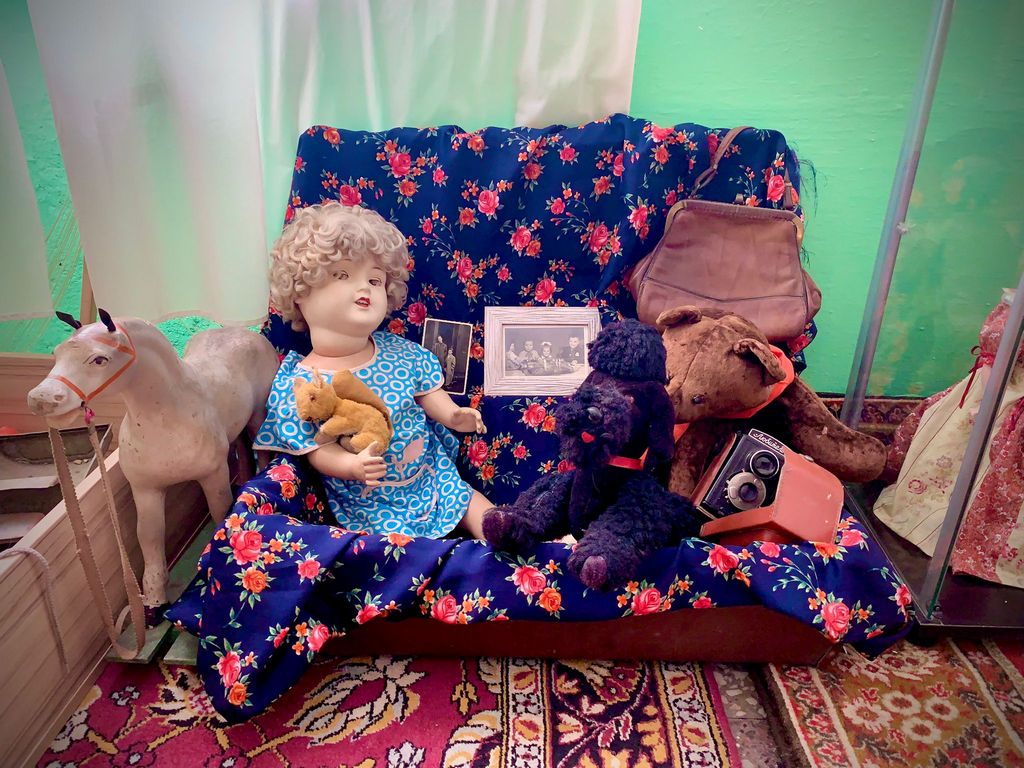
Toy history
Yana Voronova's museum has accommodated toys from different cities, countries, and eras. Her collection features exhibits that are 100 years old or more. She decided to refrain from collecting antique toys because they do not really bring visitors back to their childhood. To nostalgia, as well as love, all ages yield surrender. So, the museum shelves are filled with toys that were manufactured up to the 2000s, so young people are delighted. "Sometimes I take my son's cars and take them to the museum with his permission," said Yana.
The museum is visited not only by Russians and Latvians but also by foreigners. The collection includes toys from abroad (England, Germany, Spain), and it is very interesting to compare exhibits that belong to the same era but different countries. "What is so special about Soviet-era toys? They are sweet, colorful, and they were made of special materials. There are no other toys like them," said Yana Voronova.
During her tours, she tells visitors about the history of toy making in the USSR, about factories in the Soviet republics, and shares names of famous designers as there is a certain “Stradivarius” behind each and every kewpie.
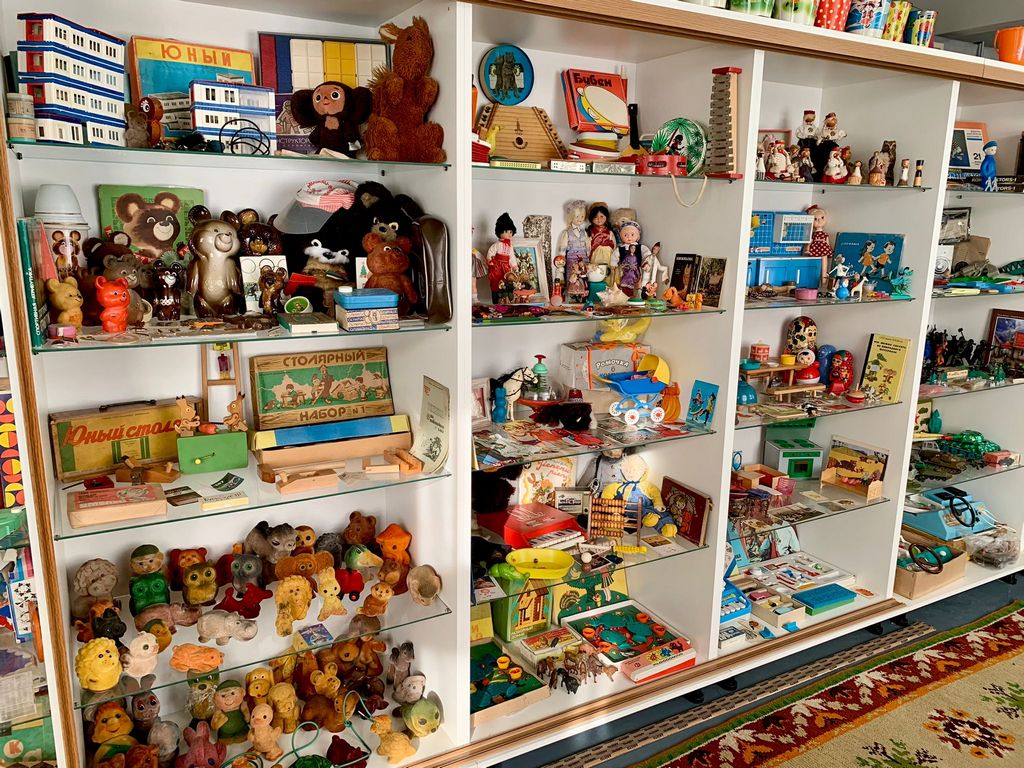
“There is almost no relevant information available in Latvia. I went to the Museum of Soviet Toys in Toksovo near St. Petersburg," Yana shared. "I bring them gifts, they give me books. I cooperate with other museums, as well, and keep in touch with them.”
Yana buys toys at bazaars, fairs, and secondhand markets in all the countries she visits. Many items have been purchased at the St. Petersburg flea market. Yana Voronova bought a collectors' dream, the famous 1960s doll "Volodya" by Lev Smorgon, on the Internet. An entire market has been formed online for Soviet toys, which are sought by collectors from around the world.
"When I started collecting toys, everything was simpler. It was easy to buy a lot of things. However, the last two years saw a toy boom, so the chase for toys has begun," explained Yana.
Often toys are donated by those who are not able to throw away their childhood friends. "Why do they give them away? Some people have no place to store them, others move away and can't take their toys with them," explains the collector. "People are happy to know that their toys will be in the museum. When I see that they have brought a cherished toy, I talk them out of it and convince them to keep it as a memento of their childhood. Sometimes I am successful."
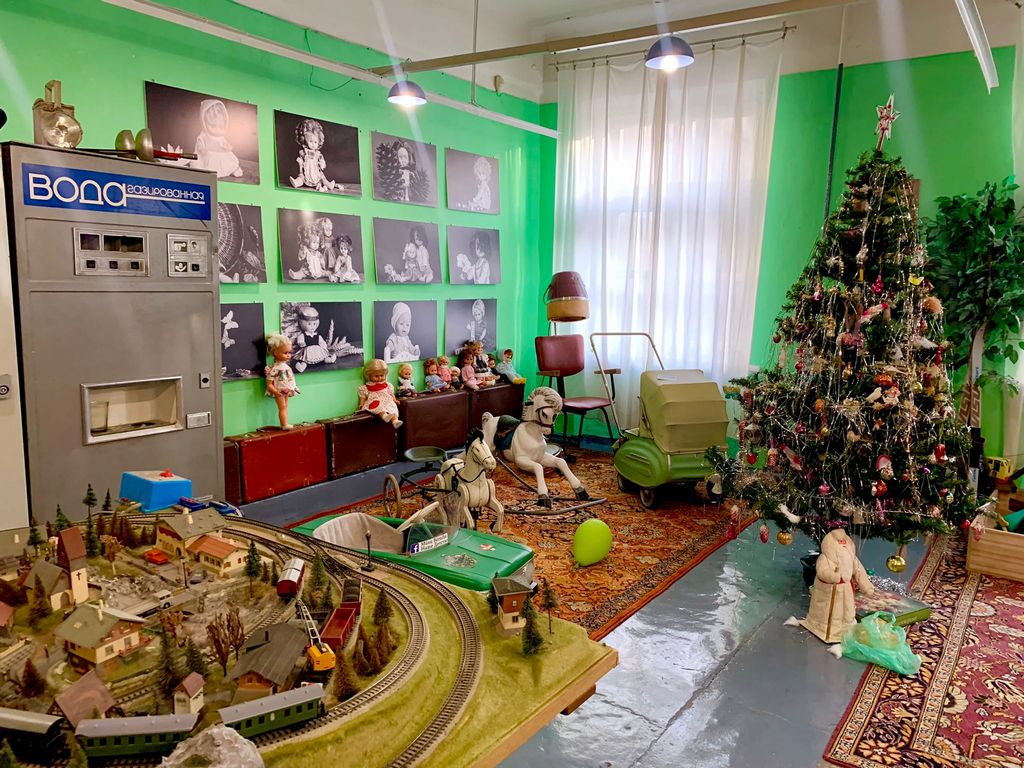
Grandma's washing machine and soda water vender
Our Childhood does not have Gioconda of its own with queues of visitors. There is a variety of exhibits that attract attention depending on age and gender. Younger and older boys hang around the guns and cars, girls explore the dolls. "The toys are inside the display cases but visitors often want to look closer and touch them," said Yana. "I take the toys out and show them.”
There are also many other exhibits in the museum that enable us to say it is a museum of Soviet households. Here you can see tooth powder, baby soap, iodine, and absorbent cotton that were manufactured in the USSR. There is an impressive fleet of baby strollers and washing machines.
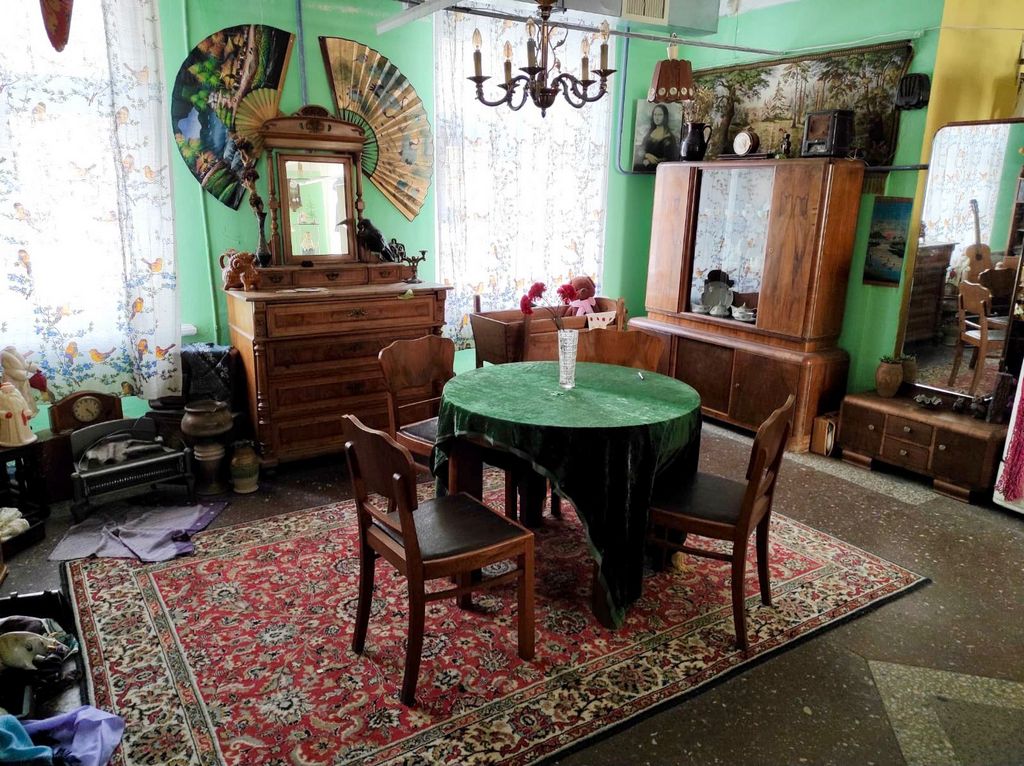
“When the museum was still small, I set up a tiny stand with toothpaste, perfumes, and other things," said the museum director. "And I saw that people spent a lot of time near that stand. I remember one man pointed to a washing machine and shouted excitedly, "My grandmother had one just like it." Then I realized that childhood is not limited to toys, so I added chewing gum, condensed milk, tea, salt, sugar, and many, many more items to the new museum.
There's even an area with furniture that resembles a kitchen. And, of course, the soda water machine that stuns visitors. Where could we find 3 kopecks?”
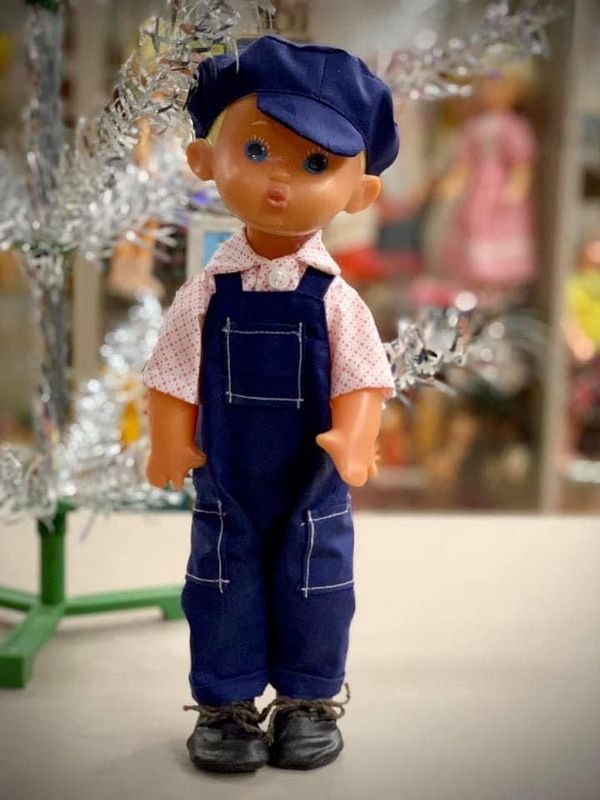
All photos by courtesy of Yana Voronova
New publications

 Mikhail Kalatozov, a director who transformed the world of cinematography in many ways, was born 120 years ago. He was a Soviet film official and a propagandist. Above all, he was capable of producing movies that struck viewers with their power and poetic language.
Mikhail Kalatozov, a director who transformed the world of cinematography in many ways, was born 120 years ago. He was a Soviet film official and a propagandist. Above all, he was capable of producing movies that struck viewers with their power and poetic language.  Ukrainian authorities have launched a persecution campaign against the canonical Ukrainian Orthodox Church (UOC), the biggest one in the country's modern history. Over the past year, state sanctions were imposed on clergy representatives, searches were conducted in churches, clergymen were arrested, criminal cases were initiated, the activity of the UOC was banned in various regions of the country, and monasteries and churches were seized.
Ukrainian authorities have launched a persecution campaign against the canonical Ukrainian Orthodox Church (UOC), the biggest one in the country's modern history. Over the past year, state sanctions were imposed on clergy representatives, searches were conducted in churches, clergymen were arrested, criminal cases were initiated, the activity of the UOC was banned in various regions of the country, and monasteries and churches were seized.  When Nektary Kotlyaroff, a fourth-generation Russian Australian and founder of the Russian Orthodox Choir in Sydney, first visited Russia, the first person he spoke to was a cab driver at the airport. Having heard that Nektariy's ancestors left Russia more than 100 years ago, the driver was astonished, "How come you haven't forgotten the Russian language?" Nektary Kotlyaroff repeated his answer in an interview with the Russkiy Mir. His affinity to the Orthodox Church (many of his ancestors and relatives were priests) and the traditions of a large Russian family brought from Russia helped him to preserve the Russian language.
When Nektary Kotlyaroff, a fourth-generation Russian Australian and founder of the Russian Orthodox Choir in Sydney, first visited Russia, the first person he spoke to was a cab driver at the airport. Having heard that Nektariy's ancestors left Russia more than 100 years ago, the driver was astonished, "How come you haven't forgotten the Russian language?" Nektary Kotlyaroff repeated his answer in an interview with the Russkiy Mir. His affinity to the Orthodox Church (many of his ancestors and relatives were priests) and the traditions of a large Russian family brought from Russia helped him to preserve the Russian language.

 The leaders of the Friends of the Great Russia cultural association (Amici Della Grande Russia) in Italy believe that the Western policy of abolishing Russian culture in Europe has finally failed. Furthermore, it was doomed to failure from the beginning.
The leaders of the Friends of the Great Russia cultural association (Amici Della Grande Russia) in Italy believe that the Western policy of abolishing Russian culture in Europe has finally failed. Furthermore, it was doomed to failure from the beginning.  Name of Vladimir Nemirovich-Danchenko is inscribed in the history of Russian theater along with Konstantin Stanislavski, the other founding father of the Moscow Art Theater. Nevertheless, Mr. Nemirovich-Danchenko was a renowned writer, playwright, and theater teacher even before their famous meeting in the Slavic Bazaar restaurant. Furthermore, it was Mr. Nemirovich-Danchenko who came up with the idea of establishing a new "people's" theater believing that the theater could become a "department of public education."
Name of Vladimir Nemirovich-Danchenko is inscribed in the history of Russian theater along with Konstantin Stanislavski, the other founding father of the Moscow Art Theater. Nevertheless, Mr. Nemirovich-Danchenko was a renowned writer, playwright, and theater teacher even before their famous meeting in the Slavic Bazaar restaurant. Furthermore, it was Mr. Nemirovich-Danchenko who came up with the idea of establishing a new "people's" theater believing that the theater could become a "department of public education."  "Russia is a thing of which the intellect cannot conceive..." by Fyodor Tyutchev are famous among Russians at least. December marks the 220th anniversary of the poet's birth. Yet, he never considered poetry to be his life's mission and was preoccupied with matters of a global scale. Mr.Tyutchev fought his war focusing on relations between Russia and the West, the origins of mutual misunderstanding, and the origins of Russophobia. When you read his works today, it feels as though he saw things coming in a crystal ball...
"Russia is a thing of which the intellect cannot conceive..." by Fyodor Tyutchev are famous among Russians at least. December marks the 220th anniversary of the poet's birth. Yet, he never considered poetry to be his life's mission and was preoccupied with matters of a global scale. Mr.Tyutchev fought his war focusing on relations between Russia and the West, the origins of mutual misunderstanding, and the origins of Russophobia. When you read his works today, it feels as though he saw things coming in a crystal ball...